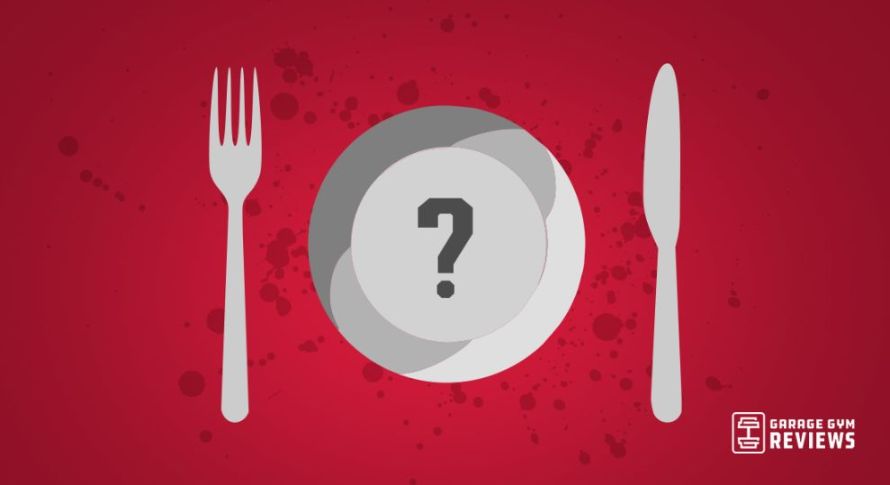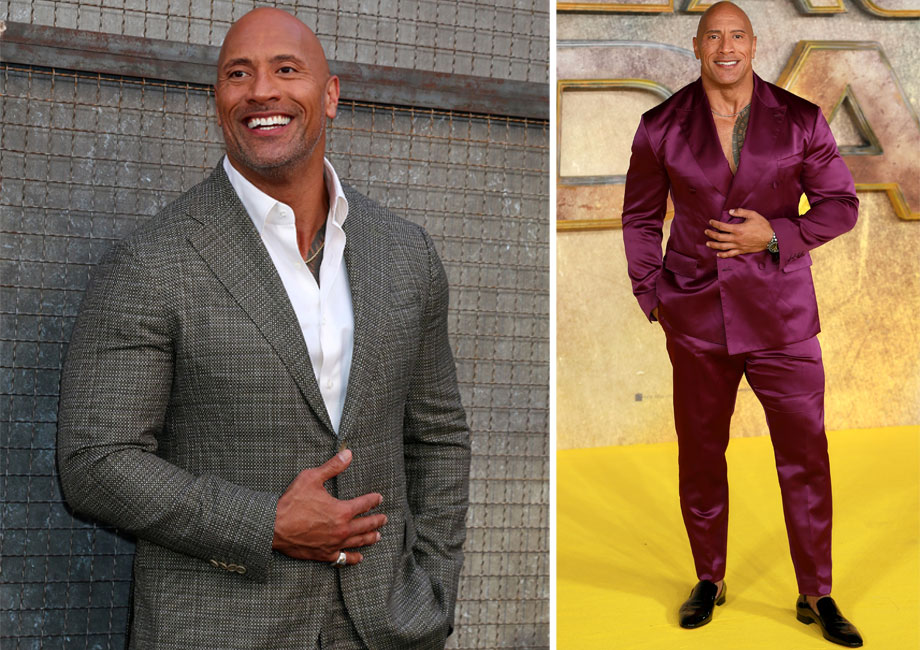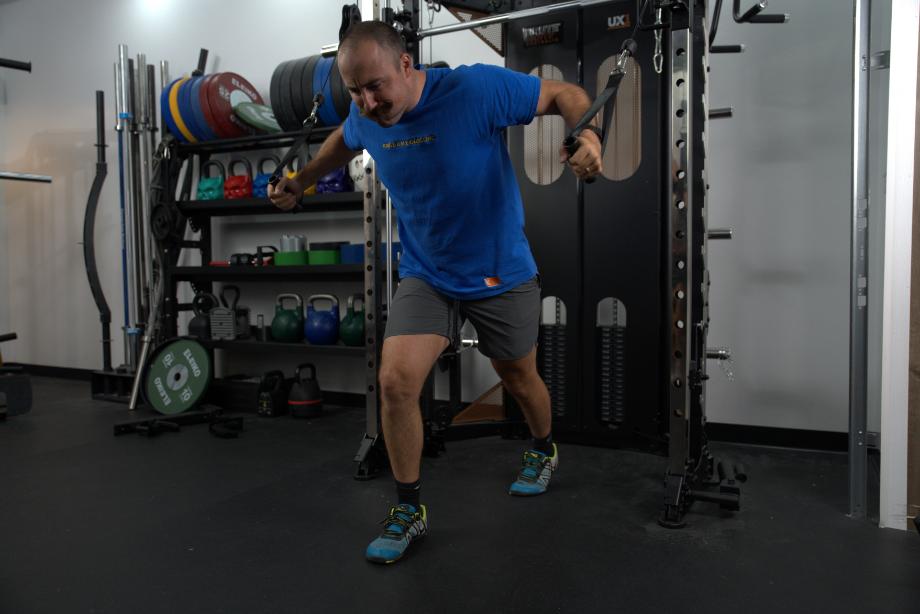Diets go in and out of fashion like a sparkly pink jumpsuit. Some are head-scratchers, others have some scientific merit, and still, others can be downright dangerous to your health. Before changing your eating habits, consider that just because a diet is supported by a well-known celebrity or backed by hundreds of anonymous testimonials doesn’t mean you should clear your pantry.
If you’re not sure whether to stick with high protein, high fat or low carb, no sugar, or something in between, you’re not alone. A new diet or two pops onto the market every few years. We’re taking a deeper look at 13 weird diets that cycle into popularity every now and then. We’ll touch on the theory and, if it’s available, the science behind the diet.
Medical disclaimer: This article is intended for educational and informational purposes only. It is not intended as a substitute for medical advice. For health advice, contact a licensed healthcare provider.
Atkins Diet
Dr. Robert C. Atkins1 published his book on the Atkins diet in 1972. It’s gone in and out of diet fashion ever since. This diet requires eating high-protein, high-fat foods and reducing or nearly eliminating carbohydrates.
It’s divided into four phases—induction, ongoing weight loss, pre-maintenance, and maintenance. The two-week induction period requires eating high-protein, high-fat foods with no more than 20 grams of carbs per day for two weeks. (If you’re wondering, the induction phase is basically a keto diet.) The goal is to deplete the body’s glycogen stores, the fuel your body uses most, to trigger fat oxidation2. The body burns fat instead of carbs as an energy source.
The ongoing weight loss phase lets you add a few fruits, nuts, low-carb vegetables, and certain cheeses. In the pre-maintenance phase, the dieter should be near their goal weight so they start adding a few more carbs to the diet to slow weight loss. In the fourth and final phase, you’re allowed to eat carbs as long as you don’t lose or gain weight.
The Atkins diet caused and still causes some controversy because it’s high in saturated fats. Saturated fats are solid at room temperature, and according to the American Heart Association3, they increase cholesterol and the chances of developing heart disease. A 2020 review4 published in the Cochrane Database Systematic Review that included 15 trials and approximately 59,000 participants found that reducing and maintaining lower saturated fat levels reduced incidences of cardiac events.
Technically, the Atkins diet is weird, but it’s not a fad because there is a phase intended for maintenance and long-term use. However, in practice, sticking to the Atkins diet can be difficult, and it can cause health problems.
Baby Food Diet
This baby food diet came onto the scene around 2010—seemingly created by celebrity trainer Tracy Anderson—and was designed as a short-term weight loss solution. With this diet, you replace breakfast, lunch, and snacks with jars of baby food, followed by a regular dinner.
We categorize this weird diet as a fad because it’s not a long-term diet plan, and as a diet plan, it’s not well-defined. For example, there’s no guidance on the types of baby food to eat, and jars of baby food can have anywhere from 20 to 120 calories. There are also no guidelines for what to eat for “regular” meals.
The baby food diet relies on extreme caloric restriction because baby food generally has fewer calories than regular food. However, a low-calorie eating plan, if taken to an extreme, can actually prevent weight loss because the body reduces the metabolic rate to counter the lack of calories.5 It’s usually a good idea to consult a dietitian before restricting calories to make sure you’re getting adequate nutrition.
Cabbage Soup Diet
Any time a diet is called after a single food, not even a single food group, expect it to be weird. The cabbage soup diet falls in the fad category because there’s very little scientific evidence to support it other than the knowledge that cabbage is healthy and that reducing calories can support weight loss.
The cabbage soup diet lets you eat as much cabbage soup as you want, with a few variations of cabbage soup that may also include carrots, onions, tomatoes and/or tomato juice, and celery6. This seven-day low-fat diet lets you eat unlimited amounts of cabbage soup for the entire seven days with various food restrictions on the other days.
For example, day two eliminates potatoes but allows any other raw or cooked vegetables. Day six allows cabbage soup, any vegetables except potatoes, and unlimited beef. The final day allows cabbage soup, sugar-free fruit juice, and brown rice.
There have been several studies on the health benefits associated with white cabbage7. Non-human laboratory studies and studies on rats have shown these nutrients, though not specifically the cabbage soup diet, to benefit insulin sensitivity, lipid profile, chronic inflammation, and reduce body fat.8, 9, 10, 11
Cabbage has nutrients with health benefits that can potentially help you lose weight. However, it doesn’t have all the nutrients your body needs. Without more variety and a higher caloric intake, you can potentially become nutrient deficient if using this diet.
Cigarette Diet
Let’s get this out there right away—smoking cigarettes is in no way healthy. However, in the early 20th century, a couple of tobacco companies promoted their products as a way to lose weight due to nicotine’s effects on the part of the brain that controls appetite12. It was and still is used by some people as a weight management tool.
However, the side effects of smoking far outweigh weight loss. The Centers for Disease Control and Prevention13 list the following health effects of cigarette smoke:
- Increased risk of coronary heart disease
- Increased risk of stroke
- Increased risk of lung cancer
- Increased risk of cancer throughout the body, not just the throat and mouth
- Reduced fertility
- Increased risk of pregnancy complications
The Cotton Ball Diet
This diet moves from weird to scary because it uses non-food items to suppress appetite. Rumor has it that it started among models and figure skaters, quickly spread to teens as a way to lose weight. They dipped cotton balls in juices and edible liquids and ate them. The cotton balls were meant to make you feel full while decreasing calorie intake.
This diet is incredibly dangerous, and not just because of calorie restriction. Cotton is not meant to be eaten and can cause a wide range of health problems, from choking and constipation to abdominal swelling and intestinal obstruction, which is a medical emergency14 that can lead to infection, tissue death, and death.
Ear Stapling Diet
Ear stapling is an alternative form of auriculotherapy, an alternative medicine practice that’s basically acupuncture of the ear. It’s a method of putting a surgical staple in the concha, the cartilage of the inner ear, for the purpose of weight loss. Proponents believe that areas of the ear correspond with other parts of your body and that puncturing the concha can release weight.
However, this diet isn’t supported by scientific evidence. The closest study we could find on the subject involved a 2009 randomized controlled trial published in the Journal of Women’s Health15. This study compared the weight loss results of a control group against a second group that underwent auricular acupuncture but not specifically ear stapling. There was no significant difference in weight loss between the two groups.
Intermittent Fasting
Intermittent fasting16 is and has been enjoying the spotlight for a few years. It relies on time-restricted feeding or food timing in which you restrict eating for a specific duration of time or window of time. There are three main forms of intermittent fasting:
- Alternate-day fasting
- Modified fasting
- Time-restricted feeding
Alternate Day Fasting
Alternate-day fasting has fasting days where no calories are eaten, followed by days of regular eating patterns. This type of intermittent fasting has been shown to cause weight loss and increased insulin sensitivity, although in human trials only males showed a greater insulin sensitivity17 Alternate-day fasting can also increase HDL cholesterol (good cholesterol) and decrease circulating fatty acids18. However, studies that explore these cardiovascular benefits have found that women show an increase in HDL cholesterol, and men show a decrease in the circulating fatty acids.
Modified Fasting
Modified fasting involves severely restricting food, though never eliminating energy intake altogether, on some days with no restriction on non-fasting days. For example, someone might do a 5:2, wherein they have severely restricted intake on two days with five days of regular eating.
When people follow a modified fasting diet plan, they generally lose weight and have improvements in health biomarkers, like insulin sensitivity19. However, it’s interesting to note that in a 2011 study20 of 107 overweight or obese premenopausal women, there was no difference in weight loss between participants who did a modified fasting diet compared to a continuous calorie-restricted diet. But some people have an easier time sticking to an intermittent fasting diet than a diet where they’re required to be careful with how much they eat at all times.
Time-Restricted Feeding
Time-restricted feeding involves fasting for eight to 21 hours at a time with short windows where you can eat anything you want. This type of intermittent fasting involves extending nighttime fasting by several hours, with people often skipping breakfast to have lunch as their first meal. A 2016 study21 that involved 24 obese men and women found that morning fasting did not cause increased calorie intake at lunch and reduced satiety and hunger hormones.
Consequently, those who try this type of diet tend to see weight loss and improved biomarkers, though some people can overeat during their feeding periods or may have difficulty with hunger pains during fasting periods.
Master Cleanse
The Master Cleanse borders more on a fasting diet than a traditional diet. It was conceptualized in the 1940s by Stanley Burroughs, who eventually published a book on it in 1976. The Master Cleanse requires drinking a lemon drink with cayenne pepper and maple syrup for 10 days, designed to cleanse the body of toxins. Along with this drink, practitioners drink a herbal laxative in a saltwater solution.
This diet does come with some small health benefits that come from the high doses of vitamin C. But it falls in the dangerous category because it so severely restricts your calorie intake with no whole foods that you easily become nutrient deficient. Additionally, your body is already a master at detoxifying itself. That’s what your liver and kidneys do full-time. No food or drink can cleanse your body better than your body already cleanses itself.
The Raw Food Diet
A raw food diet is an extreme form of veganism and has similar tenants to the paleo diet. To be considered raw, the food cannot be heated over 104°F to 118°F. Food must also be pesticide-free, non-pasteurized, and unrefined. This list of food typically consists of nuts, seeds, fruits, and vegetables. However, some people include raw meat, eggs, and dairy, like unpasteurized milk.
The theory behind this diet is that cooking food destroys some of the nutrients, which in a way is true. Cooking at high heat can change the nutrient density of food, though many of the changes that take place during cooking naturally occur during the digestive process anyway22. Eating raw food isn’t harmful and can be part of a healthy diet as long as you eat a variety of foods with enough protein and avoid eating food that may contain bacteria if uncooked.
Sleeping Beauty Diet
The sleeping beauty diet, made famous by Elvis, is a dangerous road to weight loss. It involves taking sleep medications like Xanax to increase the time you sleep and reduce the time available for calorie intake. This drug-induced weight loss is not recommended under any circumstances.
The Tapeworm Diet
Let’s call the tapeworm diet what it really is—a tapeworm infection. This diet involves swallowing a pill with a tapeworm egg inside that will eventually hatch and set up house inside the body. The tapeworm then feeds off of the host’s diet, in theory, eating some of the calories that the host would otherwise absorb.
However, the host has no control over where the tapeworm attaches itself in the body. It can attach to various areas of the intestines and cause pain, diarrhea, fever, neurological problems, and general weakness23. There’s also a risk of allergies or infections.
TikTok Diets
TikTok diets are among the latest craze. A few you might have seen are the snap diet, the carnivore diet, and the juice cleanse diet. The snap diet promotes the use of one of two supplement packets that you “snap” open and pour into a glass of water in the morning to fuel rapid weight loss. The snap diet suggests that by simply adding a snap to your diet you’ll lose weight. The truth is a supplement isn’t enough to lose weight without additional diet and exercise modifications.
The carnivore diet is really the Atkins/keto diet in a different, sexy package but with zero scientific evidence to back it up. As already discussed, a high-protein, high-fat diet can potentially have negative side effects even if there is an initial weight loss.
The juice cleanse diet is a combination of the raw food diet and the Master Cleanse. However, the body already naturally cleanses itself and any diet that eliminates entire food groups, like animal products and whole grains, will eventually leave you deficient.
TikTok and social media are dangerous places to get diet information. They require no scientific evidence and may rely on the experience and testimony of a single person or a small group of people who may or may not have followed the diet plan advertised.
Vision Diet
Get out your sunglasses because the vision diet requires wearing blue-tinted glasses while eating all food. The blue tint is supposed to make the foods look less appealing so you’ll eat less of them . . . and that’s it. At least this diet isn’t harmful to your health in any way, though we’re not sure how well it works.
Weird Diets: Final Thoughts
Weird diets might look attractive on the outside, with celebrity endorsements and claims of fast, easy results. As much as we would all like a quick fix, healthy weight loss takes time and consistent effort. A healthier lifestyle, whether for weight loss or other reasons, comes from eating a variety of healthy foods, including healthy fats, and avoiding junk food. Remember that:
- If a diet requires eliminating an entire food group or groups, be skeptical. Your body needs a variety of nutrients that you can only get from eating a variety of foods.
- Consult with your doctor before starting a diet to make sure it fits your medical needs and will provide the necessary nutrients.
- Look for scientific evidence to support any diet you are considering.
If you’re considering significantly changing your diet, consult a registered dietician nutritionist who can give you recommendations on calorie intake and nutrient needs based on your weight, gender, and medical history.
Weird Diets: Q&A
What are some unique diets?
A few diets that might be called “unique” include the cotton ball diet, cabbage soup diet, and similarly restrictive diets that may include non-edibles or a severely restricted number of foods.
What are some weird fad diets?
The sleeping beauty diet and tapeworm diets are weird fad diets that are also extremely dangerous. These diets go against everything science knows about health, such as using potentially addictive medications or purposely infecting the body with a parasite to lose weight.
What is the TikTok diet?
There are many TikTok diets floating around. A TikTok diet is any diet that gains attention or notoriety because of a TikTok influencer.
What other strange diets have been developed?
A few that didn’t make our list include the charcoal cleanse, which involves drinking activated charcoal to remove toxins; the Shangri-La diet, which requires drinking sugar water or extra-light olive oil between meals; and the ice diet, which requires chomping or sucking on a liter of ice between meals to burn more calories.
These statements have not been evaluated by the Food and Drug Administration. This product is not intended to diagnose, treat, cure, or prevent any diseases.
References
- Lenzer J. Robert Coleman Atkins. BMJ. 2003 May 17;326(7398):1090. PMCID: PMC1126011.
- Merrill, JD, et al. Low-carbohydrate and very-low-carbohydrate diets in patients with diabetes. Diabetes Spectrum. 2020; 33(2): doi: 10.2337/ds19-0070.
- American Heart Association. Saturated Fat. (2021).
- Hooper, LH, et al. Reduction in saturated fat intake for cardiovascular disease. Cochrane Database Systematic Review. 2020; 19(5): doi: 10.1002/14651858.CD011737.pub2.
- Benton, D, and Young H.A. Reducing calorie intake may not help you lose body weight. Perspectives on Psychological Science. 2017; 12(5): doi: 10.1177/1745691617690878.
- Navaro, D.A, et al. Functional foods in fad diets: A review. Functional Foods in Health and Diseases. 2017; 7(9): doi: 10.31989/ffhd.v7i9.346.
- Navaro, D.A, et al. Functional foods in fad diets: A review. Functional Foods in Health and Diseases. Ibid.
- Kobayasi, R., et al. Oxidative stress and inflammatory mediators contribute to endothelial dysfunction and high-fat diet-induced obesity in mice. Journal of Hypertension. 2010; 28(10): p. 2111-2119. doi: 10.1097/HJH.0b013e32833ca68c.
- Moon, J, et al. Anti-obesity effects of quercetin-rich onion peel extract on the differentiation of 3T3-LI preadipocytes and the adipogenesis of high fat-fed rats. Food and Chemical Toxicology. 2013; 58: p. 347 – 354. doi: 10.1016/f.fct.2013.05.006.
- Henagan, TM, et al. In vivo effects of dietary quercetin and quercetin-rich red onion extract on skeletal muscle mitochondria, metabolism, and insulin seven’s activity. Genes & Nutrition. 2015; 10(2). doi: 10.1007/s12263-014-0451-.1
- Cruz KF, et al. Role of micro-RNAs on adipogenesis, chronic low-grade inflammation, and insulin resistance and obesity. 2017: 35: p. 28-35. doi: 10.101 6/j.nut.2016.10.003.
- Tongyan, H, Zhongli, Y, and Ming DL. Pharmacological effects and regulatory mechanisms of tobacco smoking effects on food intake and weight control. Journal of Neuroimmune Pharmacology. 2018; 13: p. 453 – 466. doi: 10.1007-s11481-018-9800-y.
- Health Effects of Cigarette Smoking. Centers for Disease Control and Prevention. 2021.
- Jackson, PG and Raiji, M. Evaluation and management of intestinal obstruction. American Family Physician. 2011; 83(2): p. 159-165.
- Chung-Hua, H, et al. The effect of auricular acupuncture in obese women: A randomized controlled trial. Journal of Women’s Health. 2009; 18(6). doi: 10.1089/jwh.2008.1005.
- Patterson, RE and Sears DD. Metabolic effects of intermittent fasting. Annual Review of Nutrition. 2017; 37: p. 371-393. doi: 10.1146/annurev-nutr-071816-064634.
- Varady, KA and Hellerstein, MK. Alternate day fasting and chronic disease prevention: A review of human and animal trials. The American Journal of Clinical Nutrition. 2007; 86(1): p. 7-13. doi: 10.1093/ajcn/86.1.7.
- Varady, KA and Hellerstein, MK. Alternate day fasting and chronic disease prevention: A review of human and animal trials. The American Journal of Clinical Nutrition. 2007; 86(1): p. 7-13. Ibid.
- Patterson, RE and Sears DD. Metabolic effects of intermittent fasting. Annual Review of Nutrition. 2017; 37: p. 371-393. Ibid.
- Harvie, MN, et al. The effects of intermittent or continuous energy restriction on weight loss and metabolic disease risk markers: A randomized trial in young overweight women. International Journal of Obesity. 2001: 35: p. 714-727. doi:10.1038/ijo.2010.171.
- Chowdhury, EA, et al. Effect of extended morning fasting upon ad libitum lunch intake and associated metabolic and hormonal responses in obese adults. International Journal of Obesity. 2016; 40: p. 305-311. doi: 10.1038/ijo.2015.154.
- O’Connor A and O’Morain C. Digestive function of the stomach. Digestive Diseases. 2014; 32: p. 186-191. doi: 10.1159/000357848.
- Lesh, EJ and Brady, MF. Tapeworm.StatPearls. 2022.







